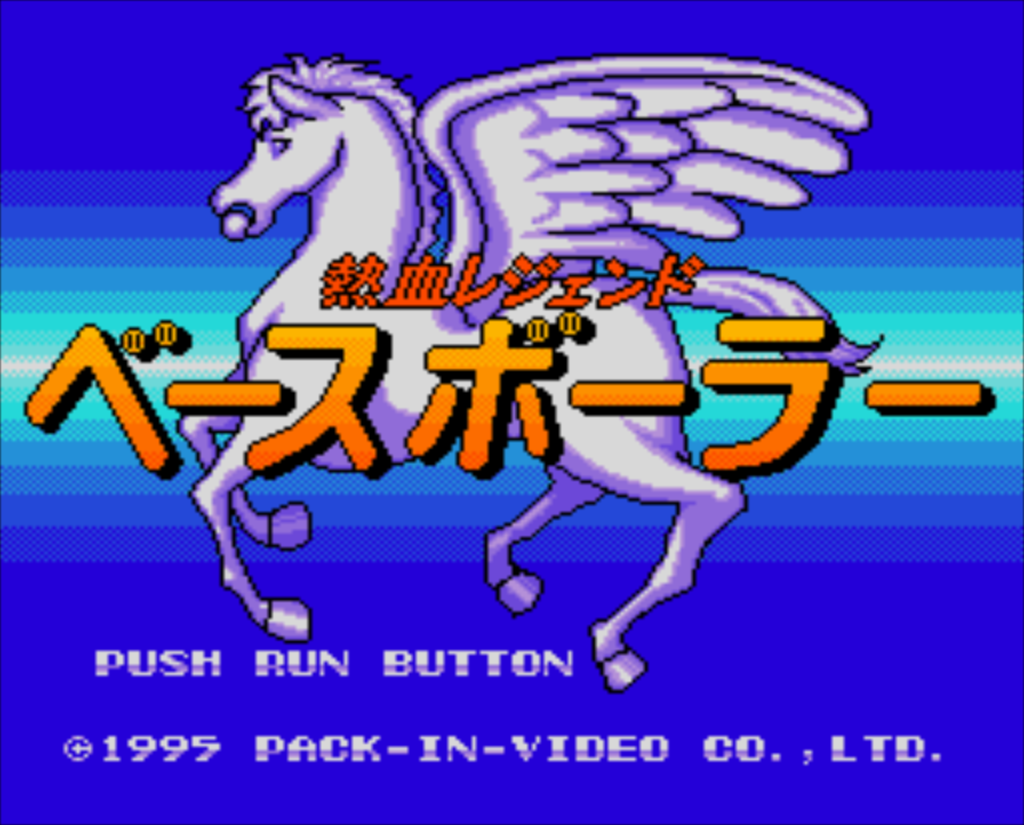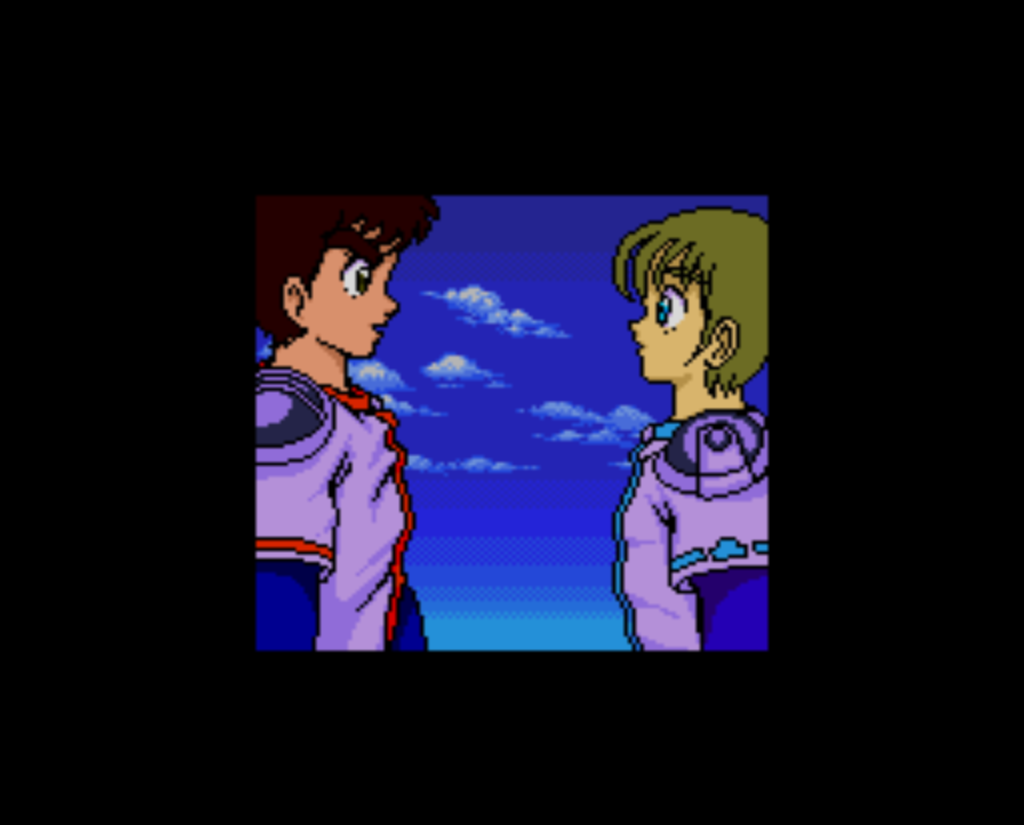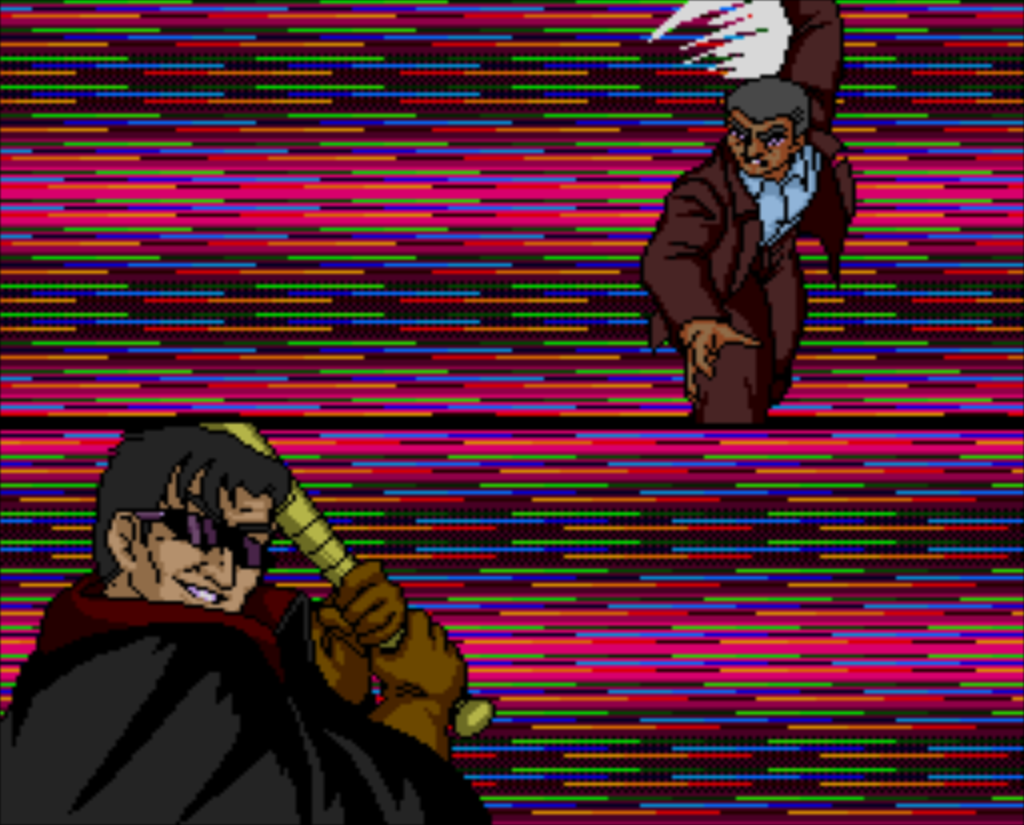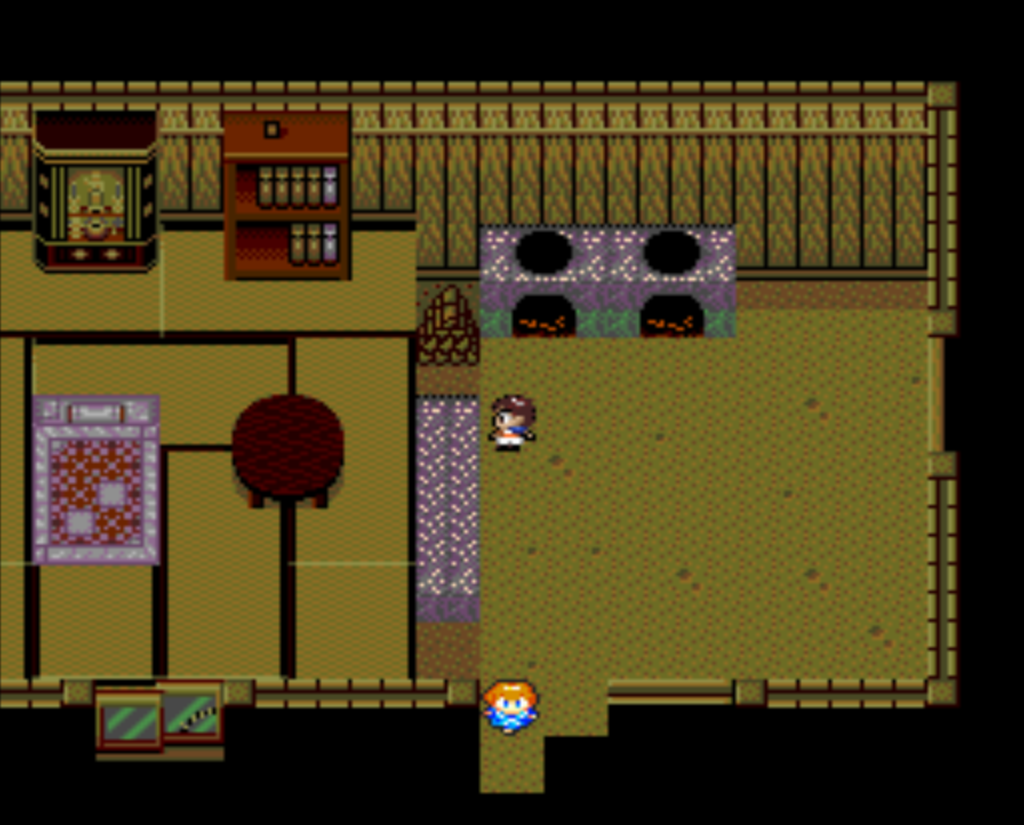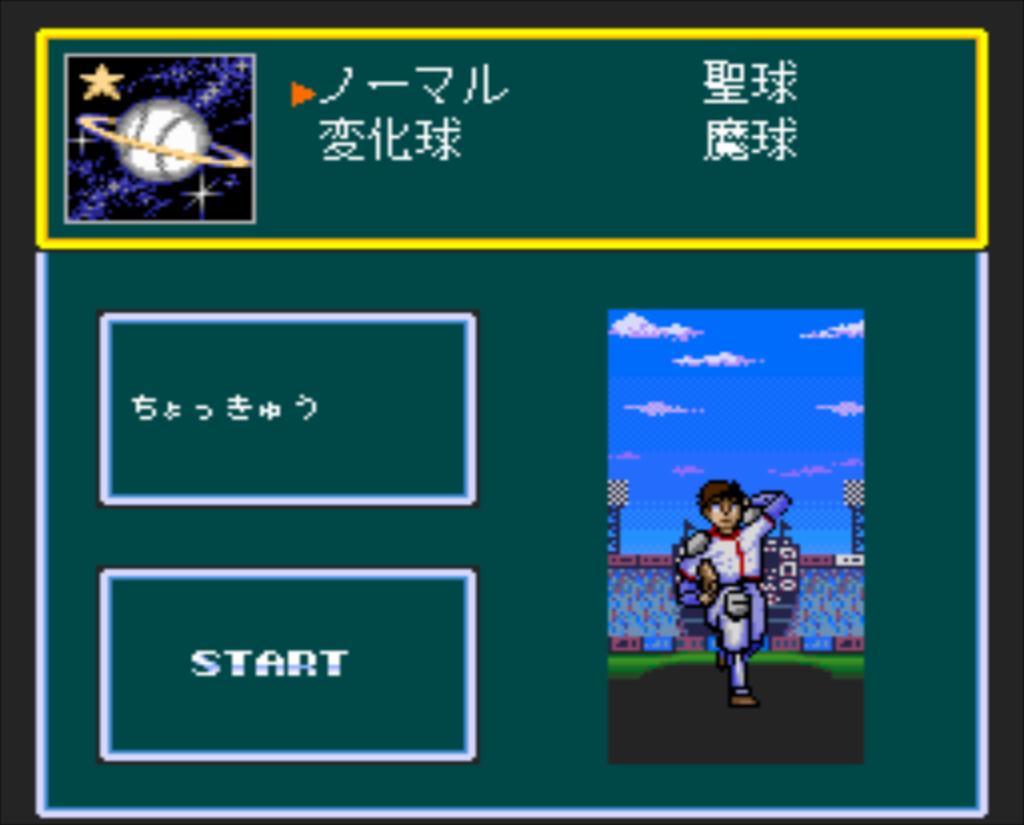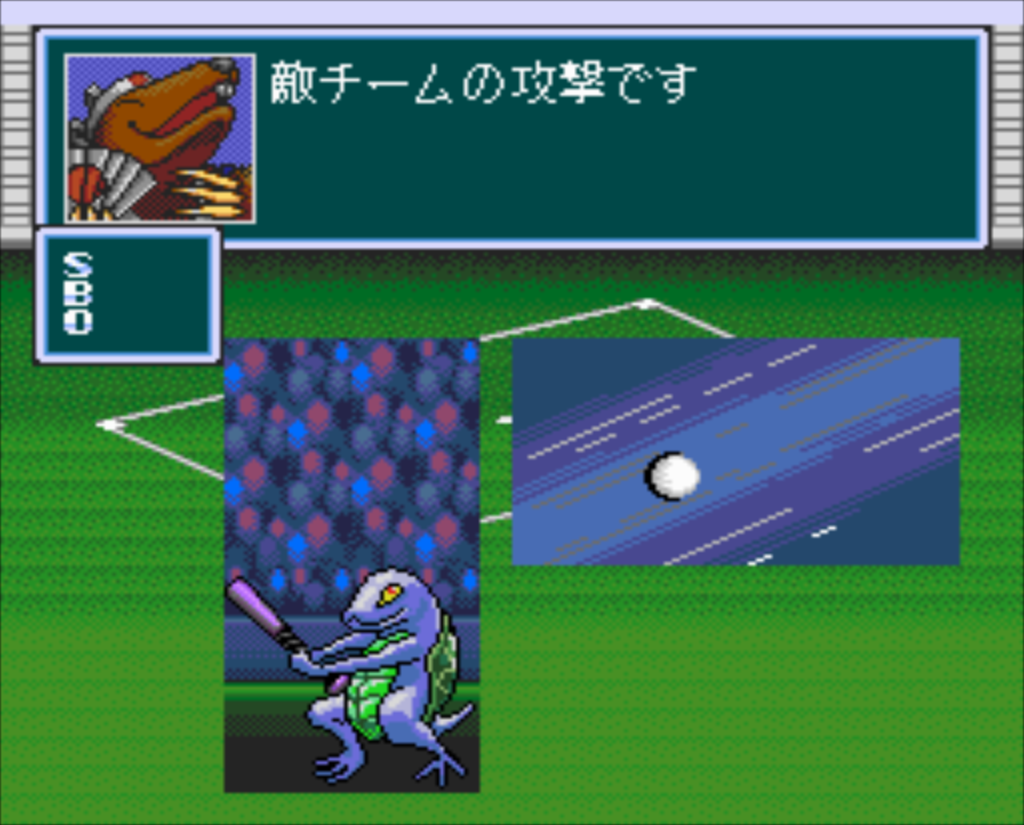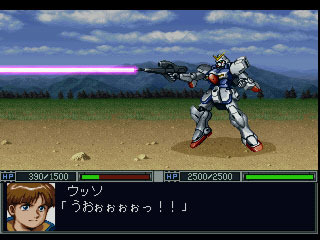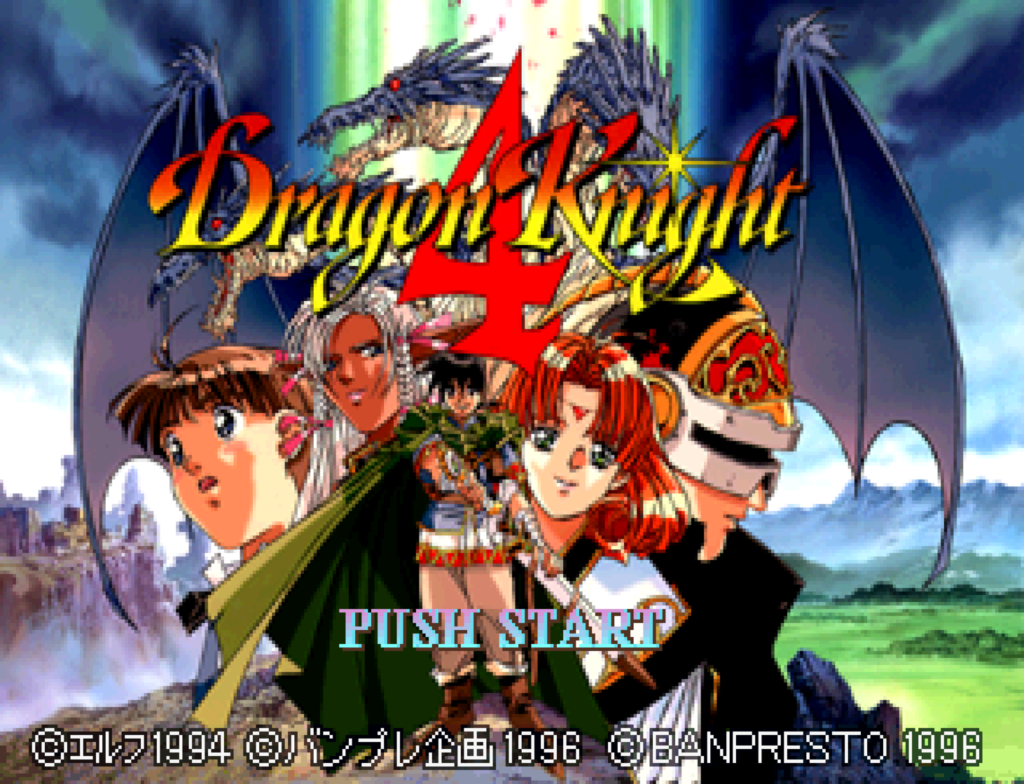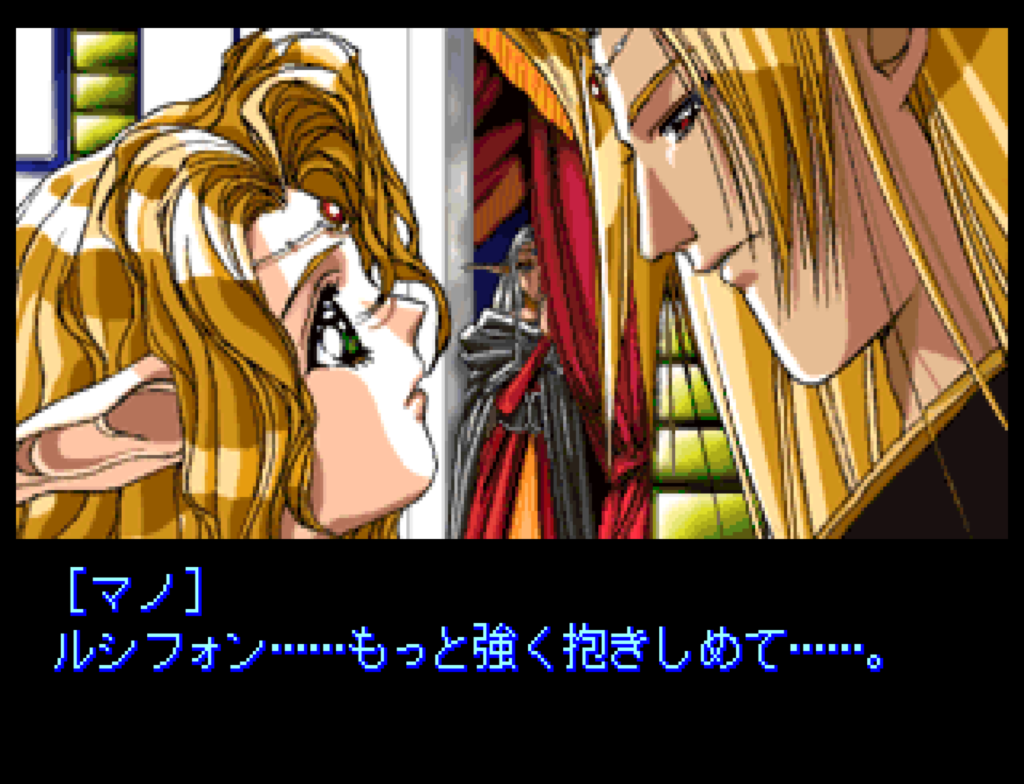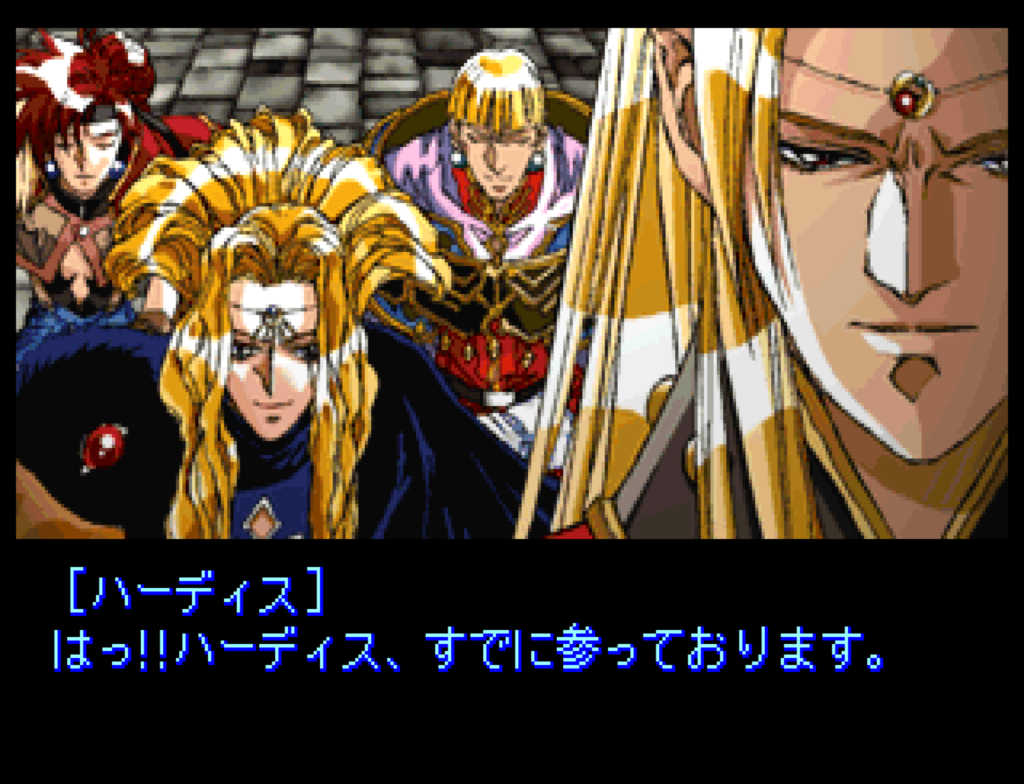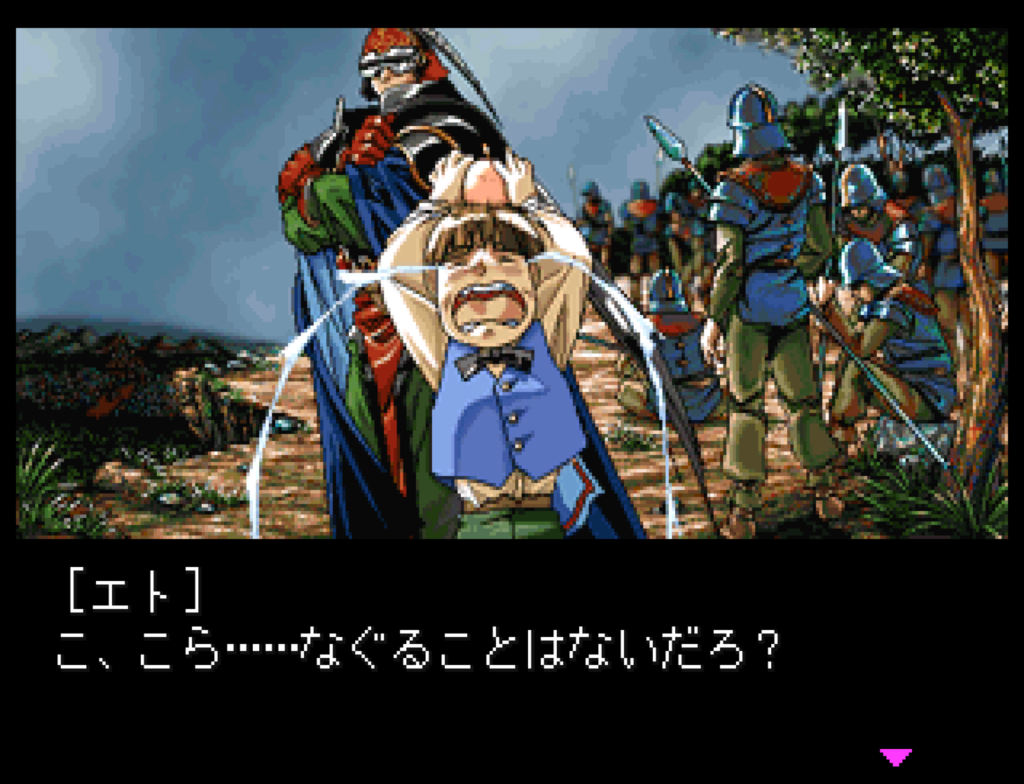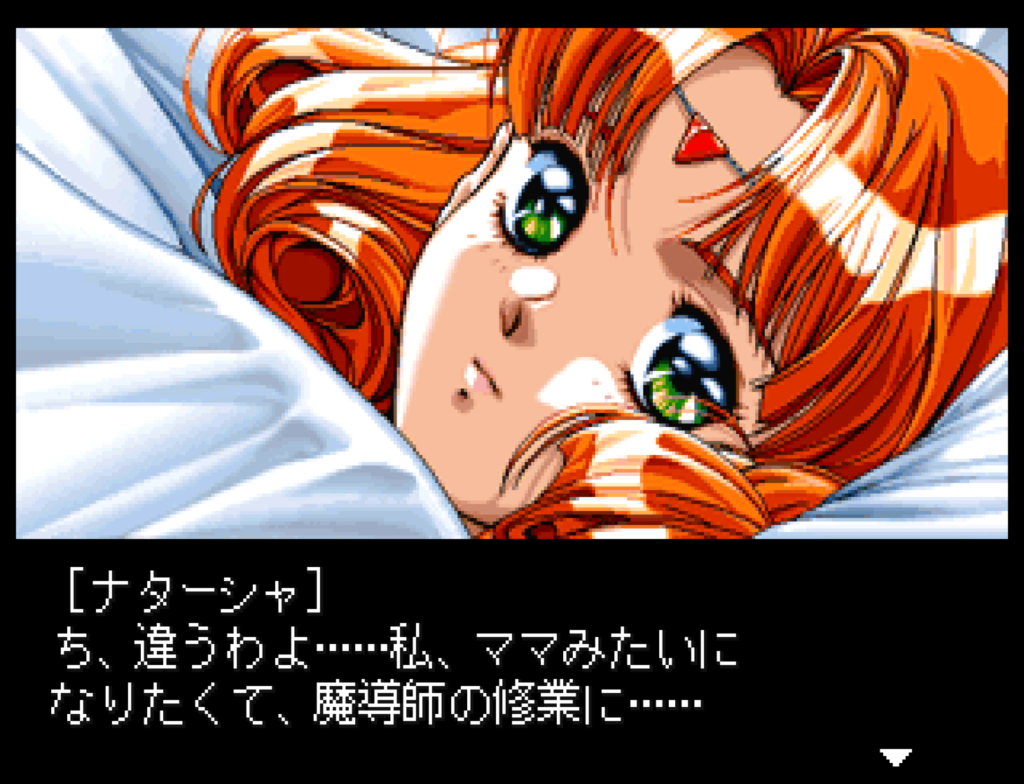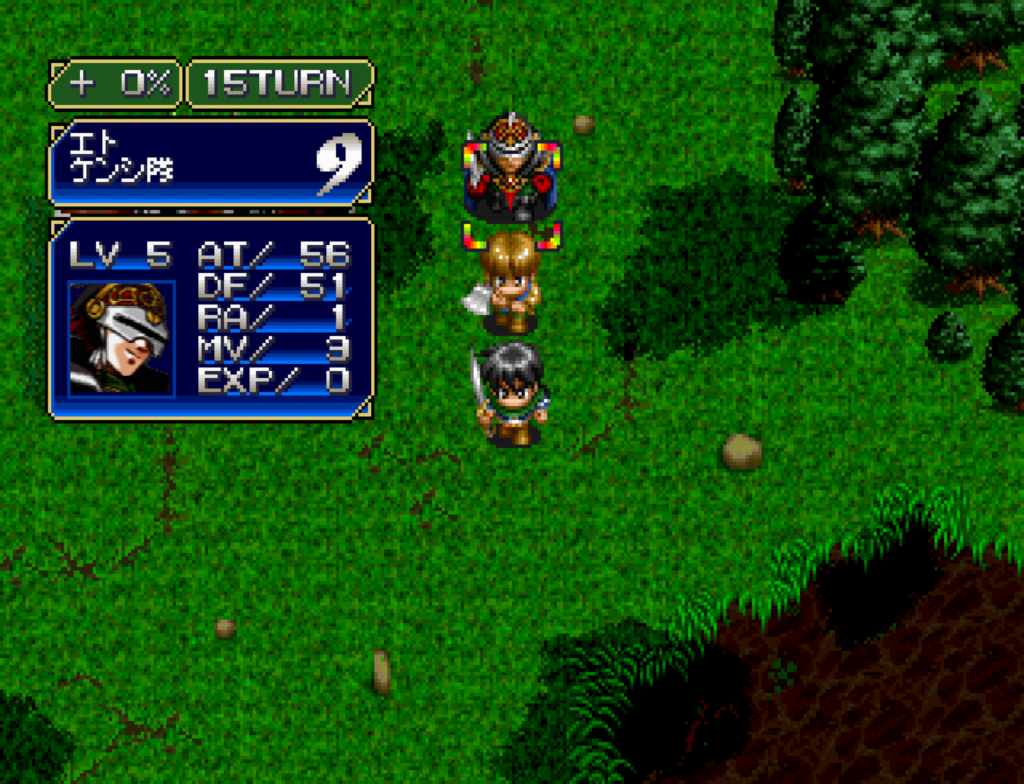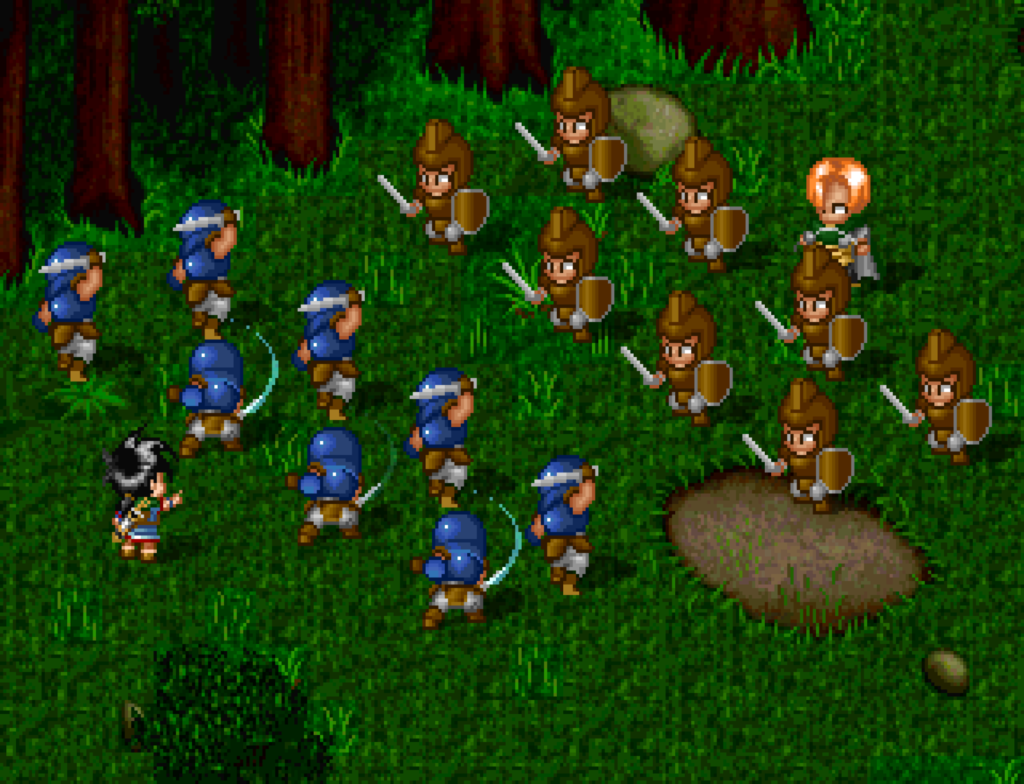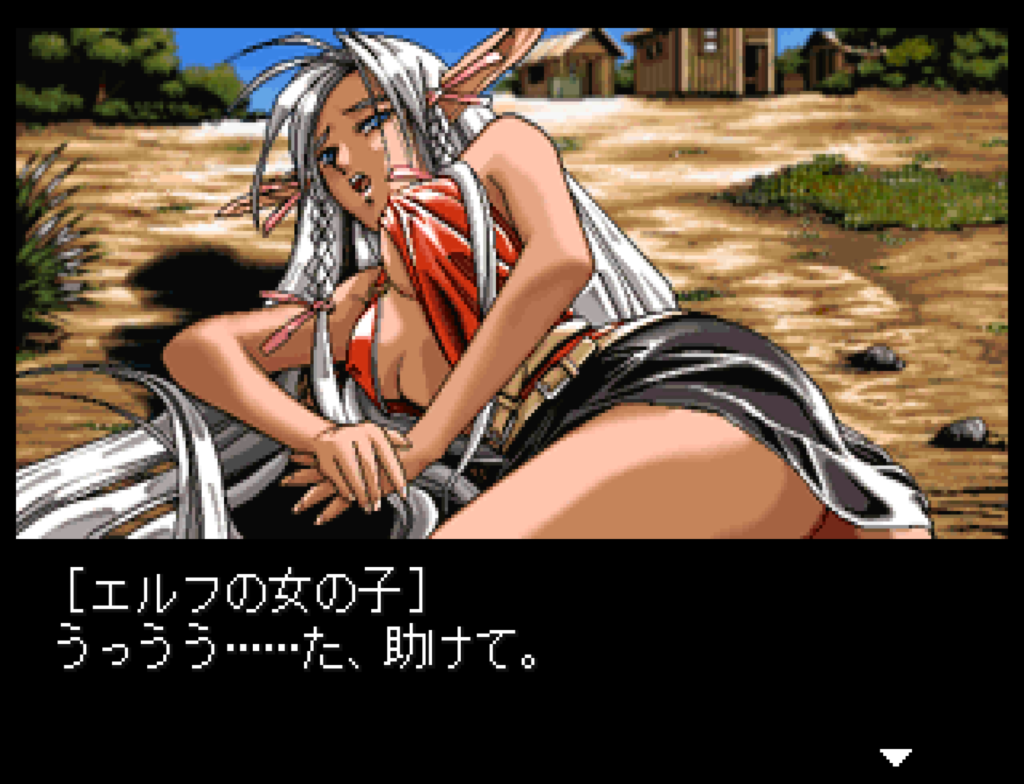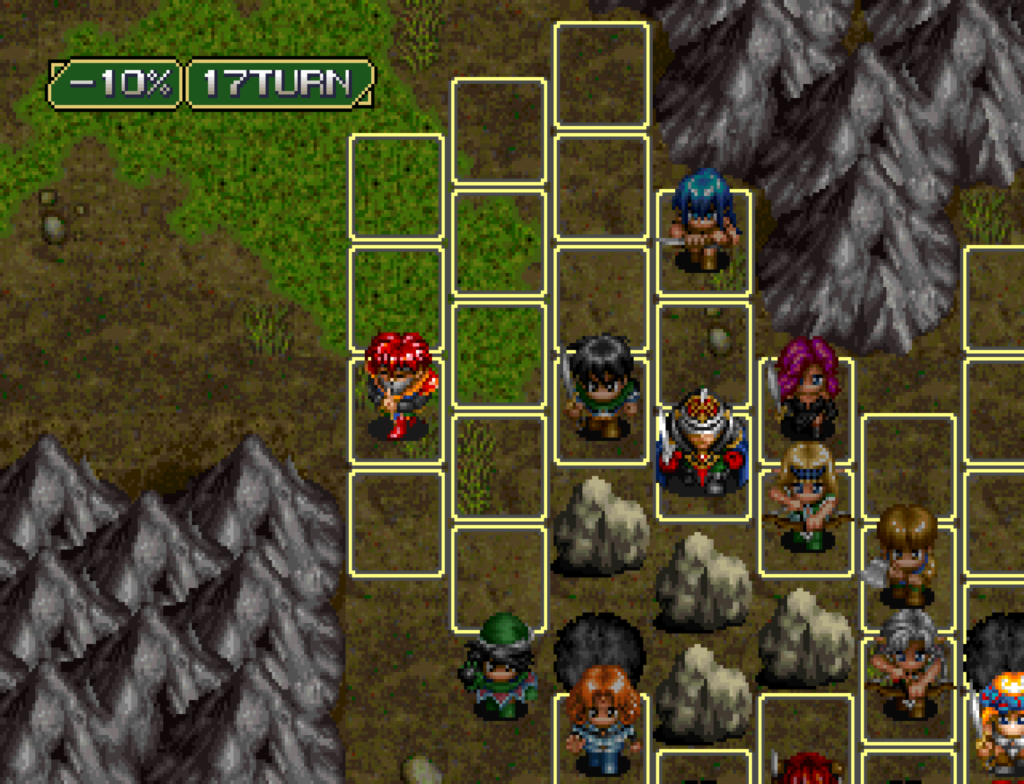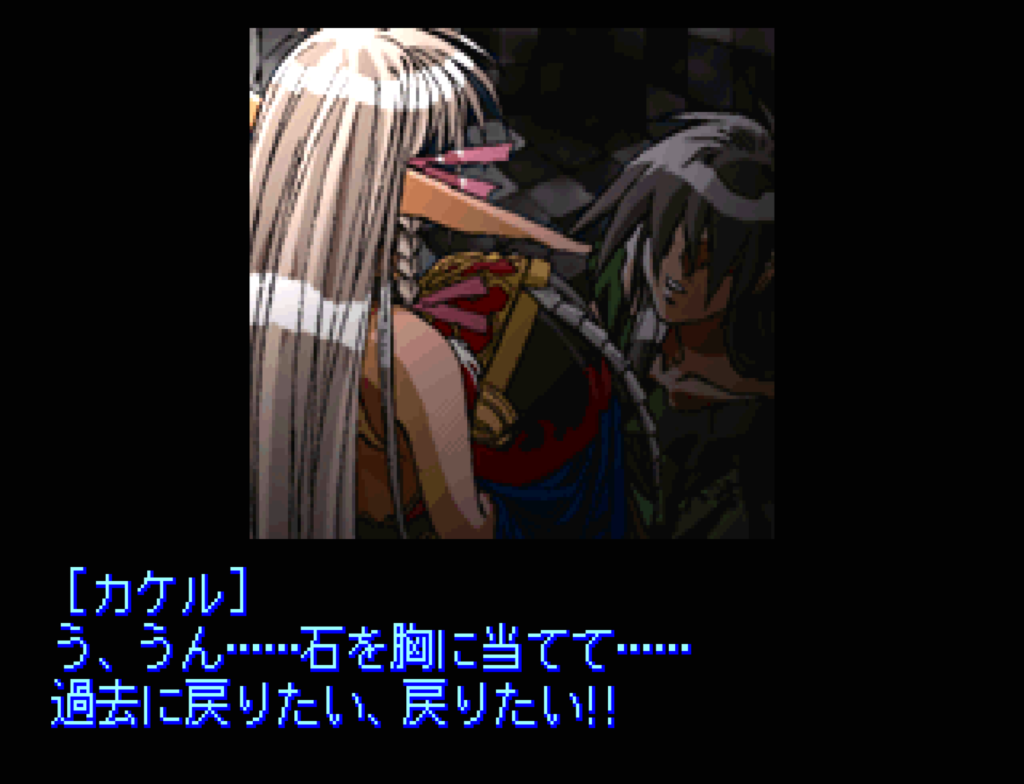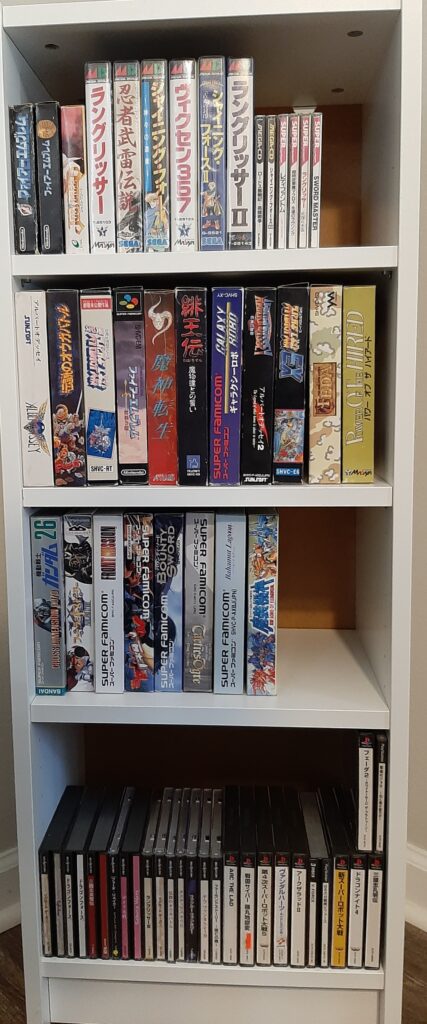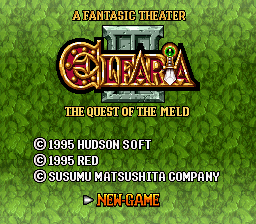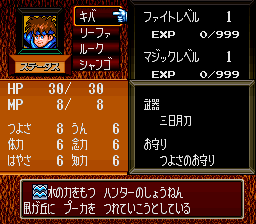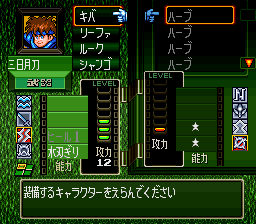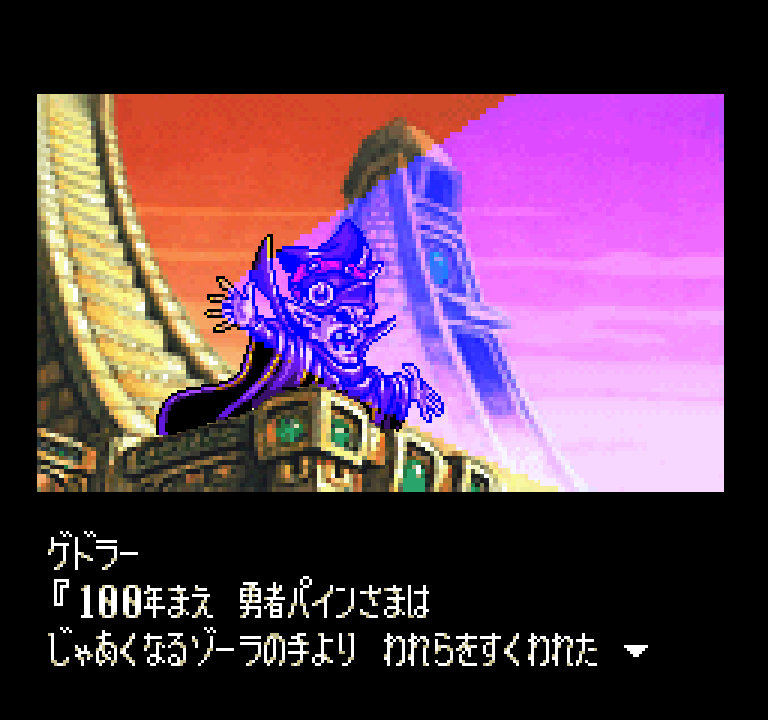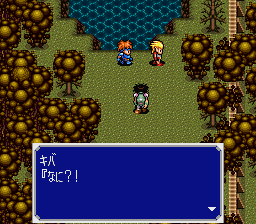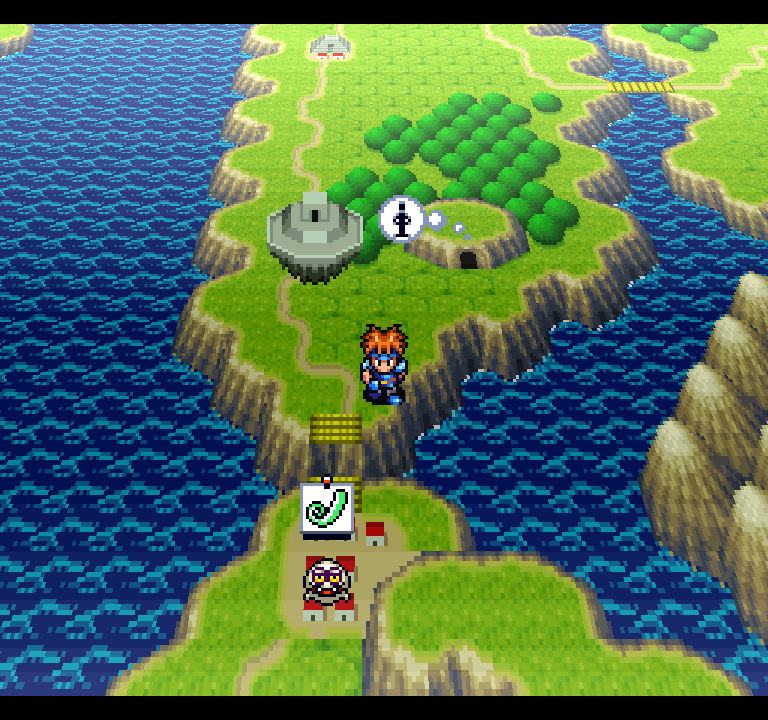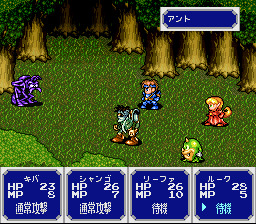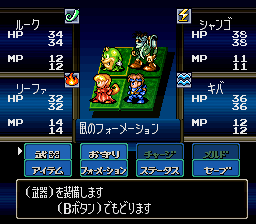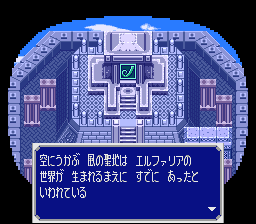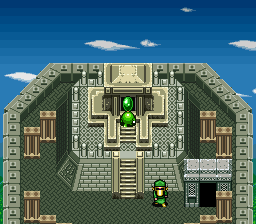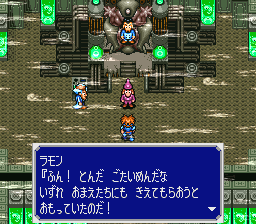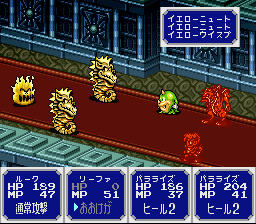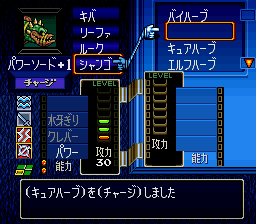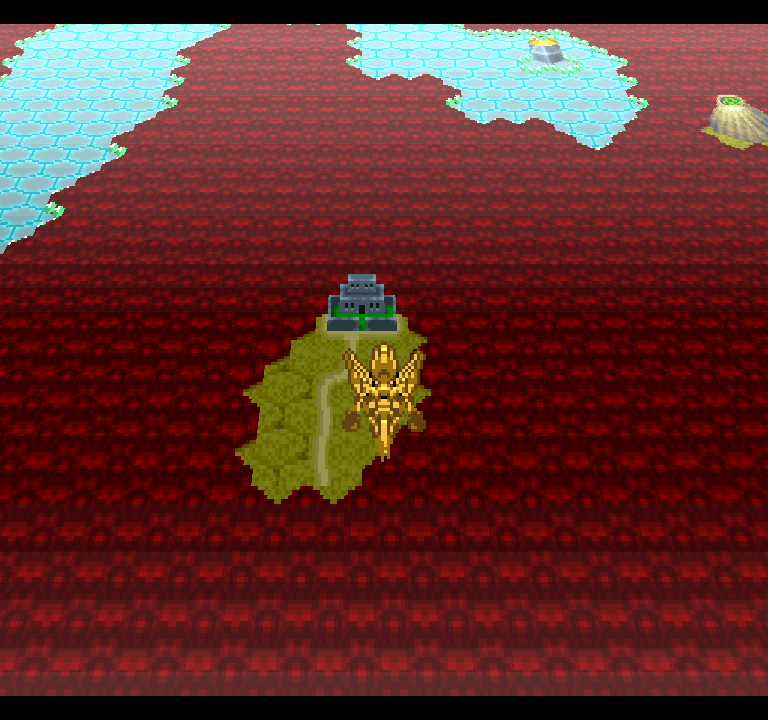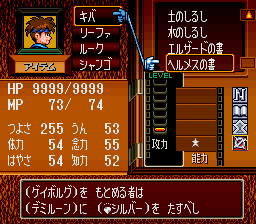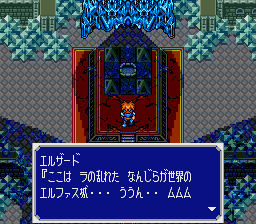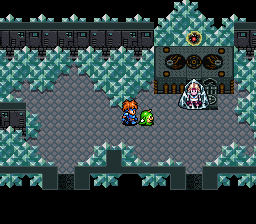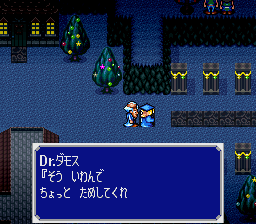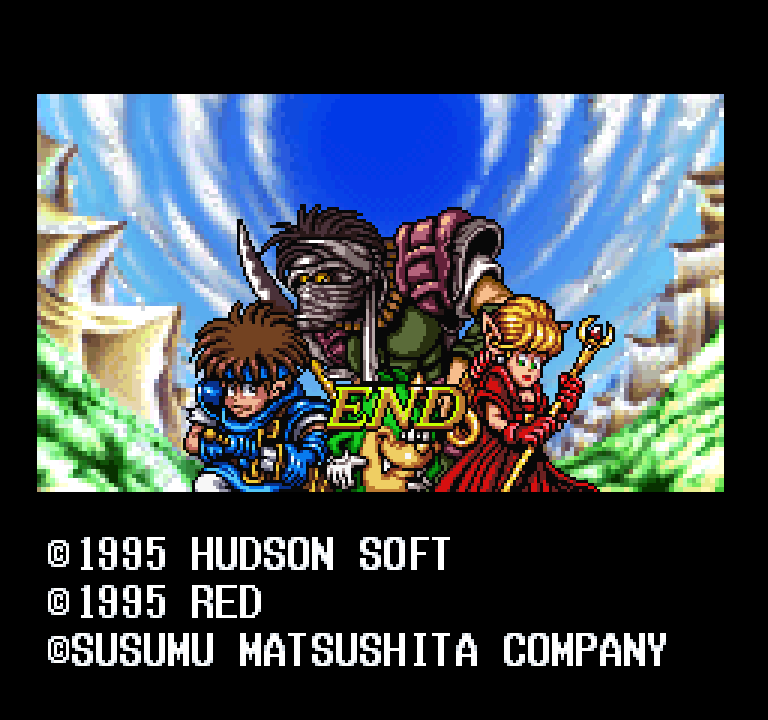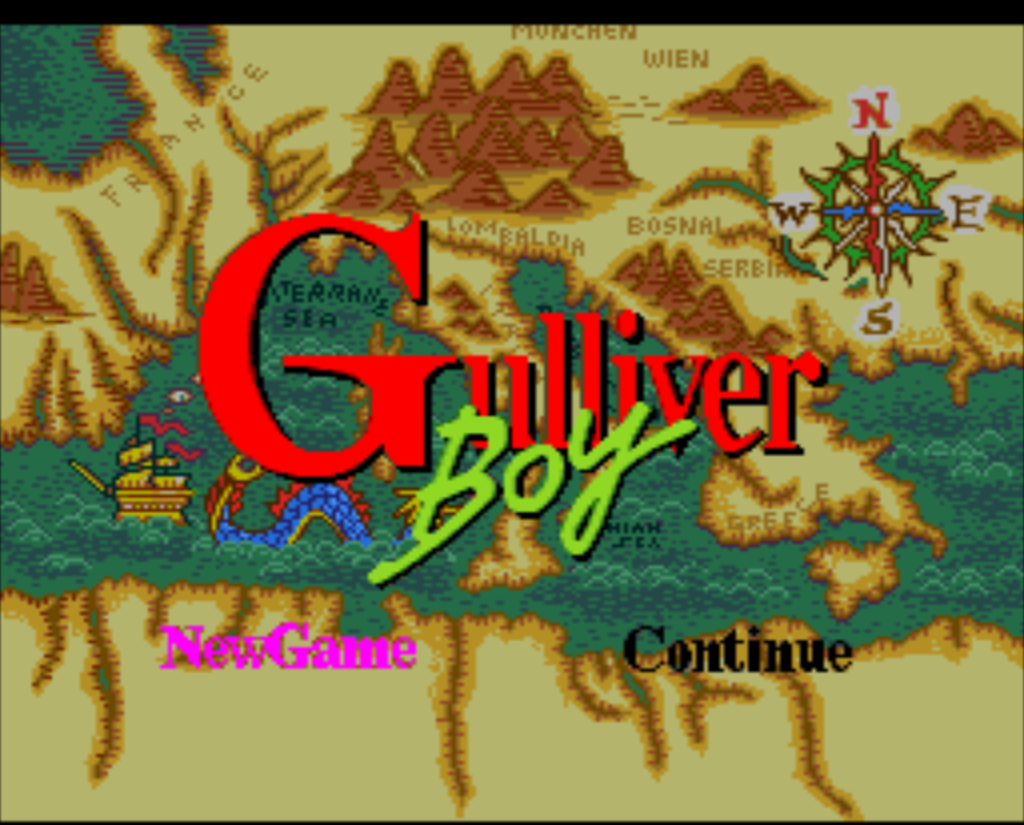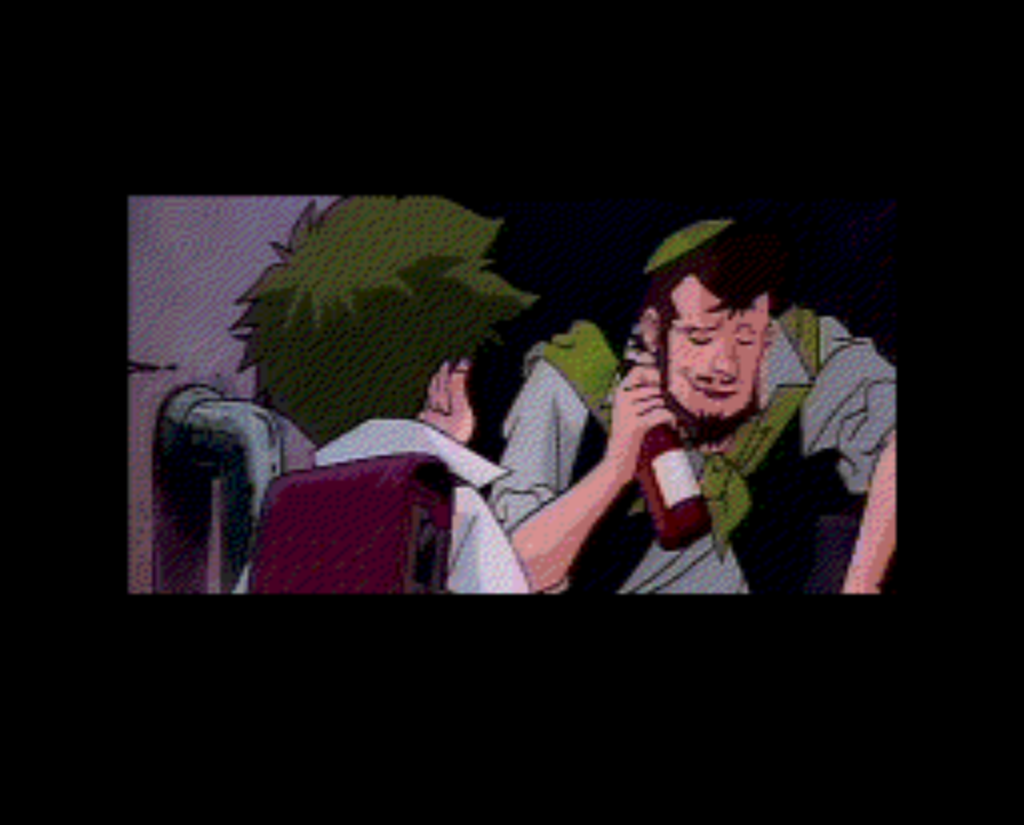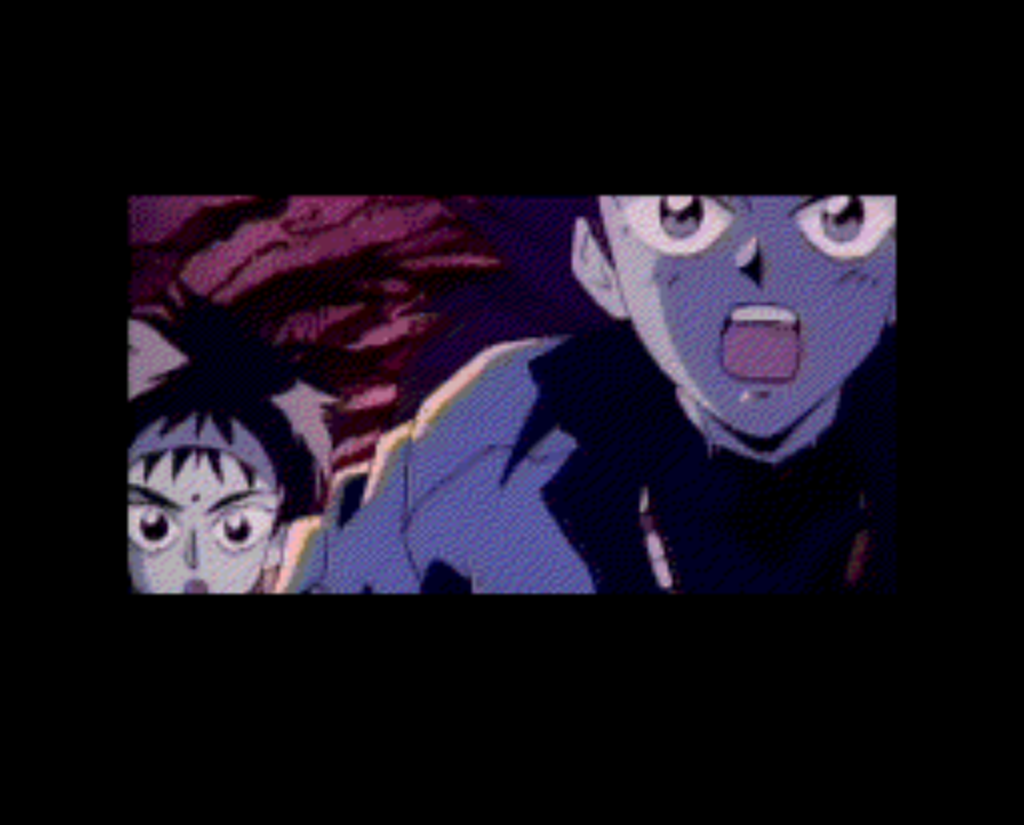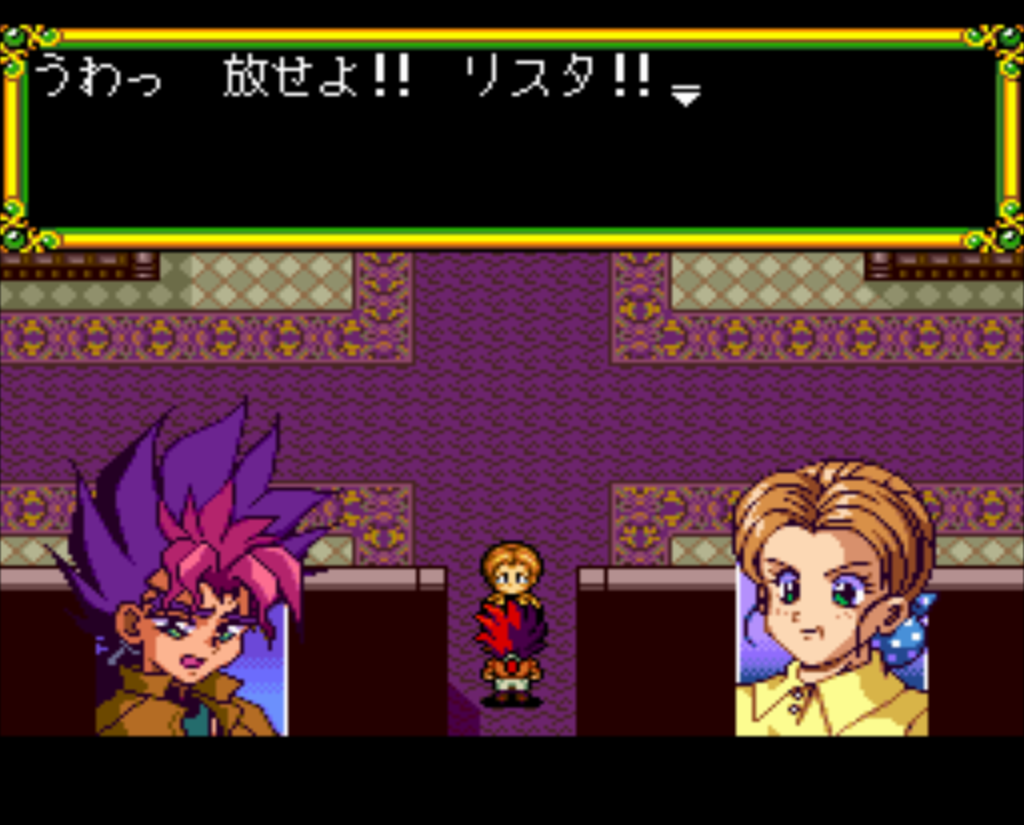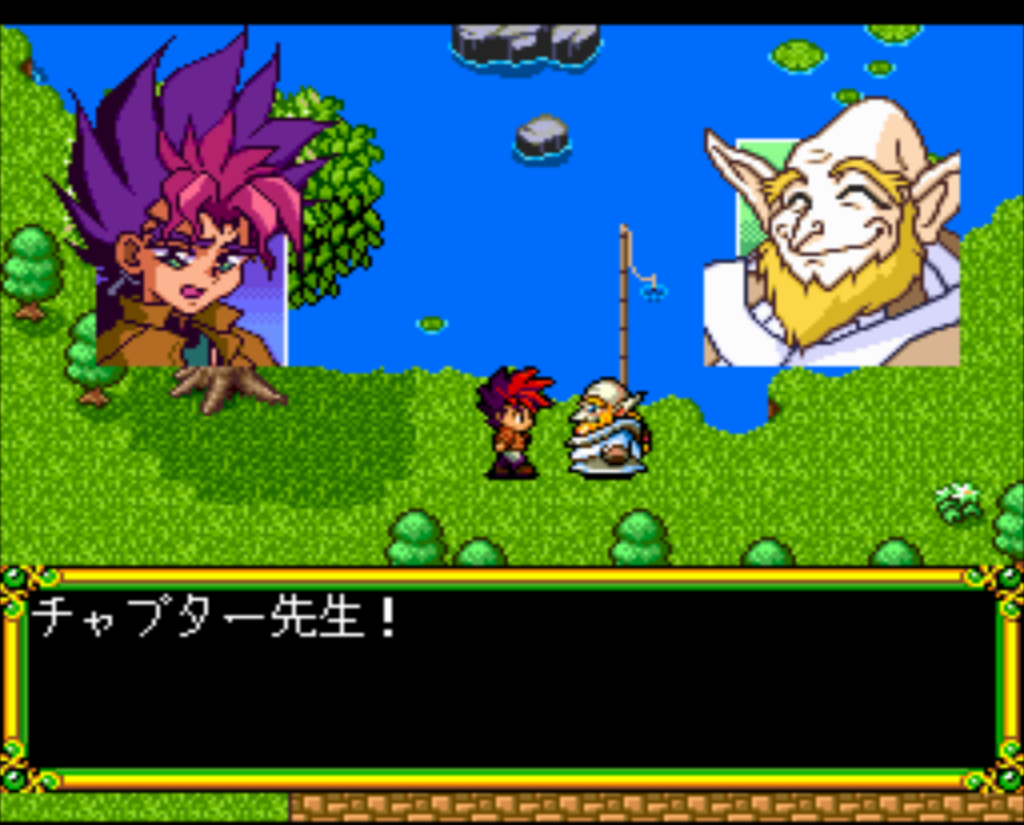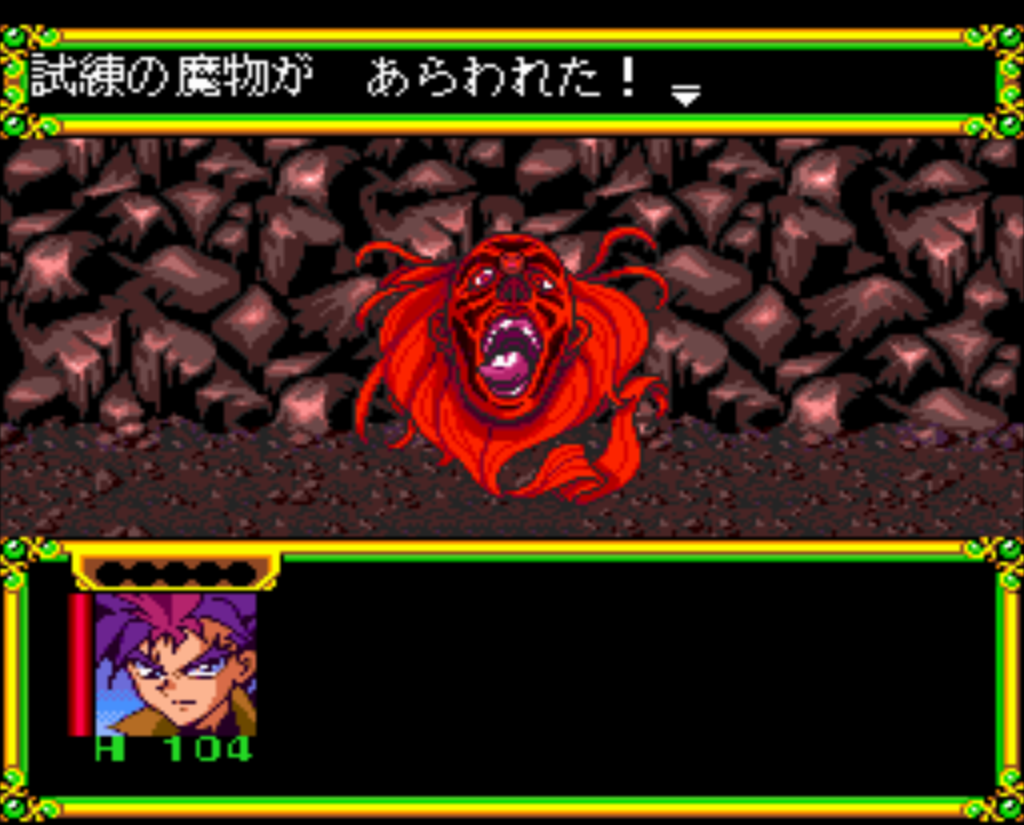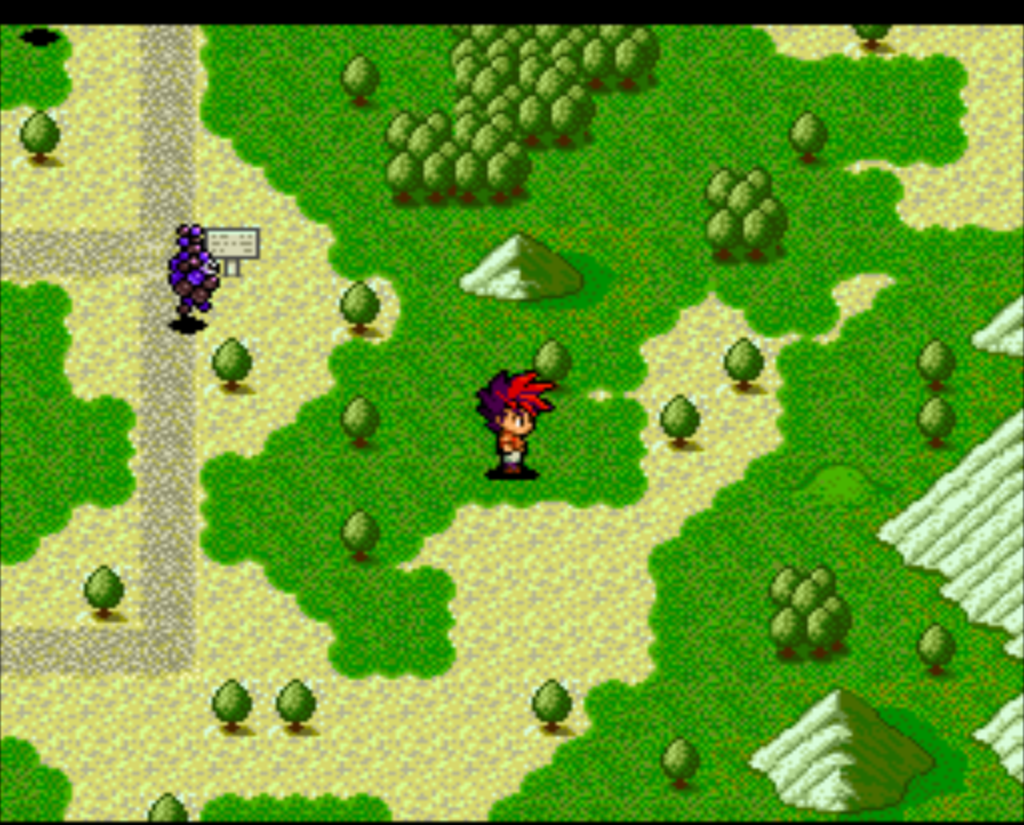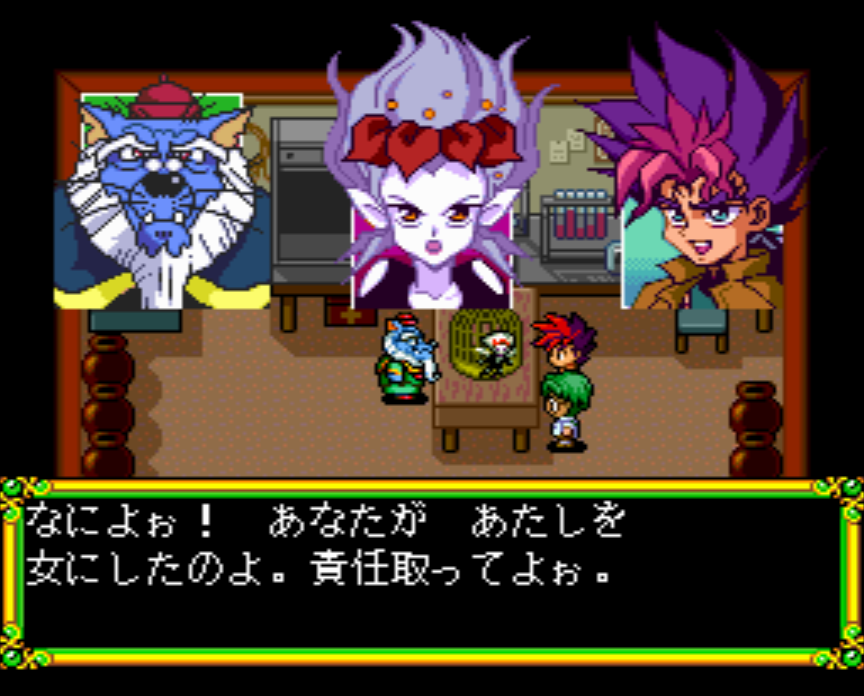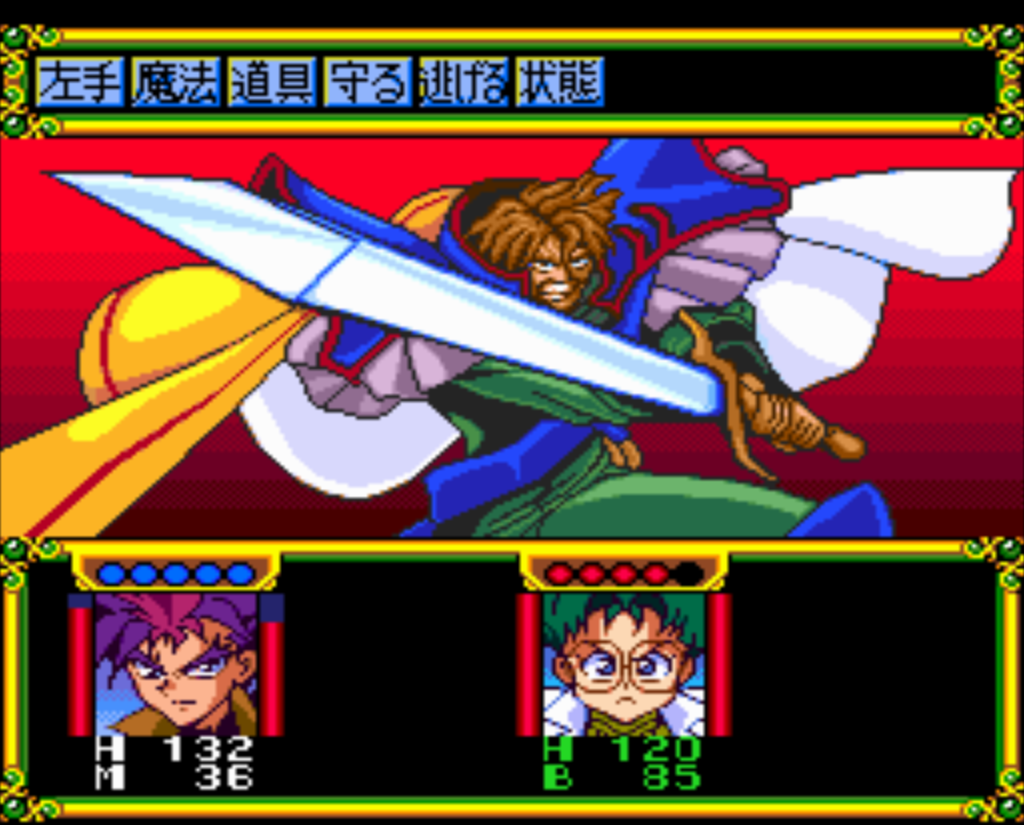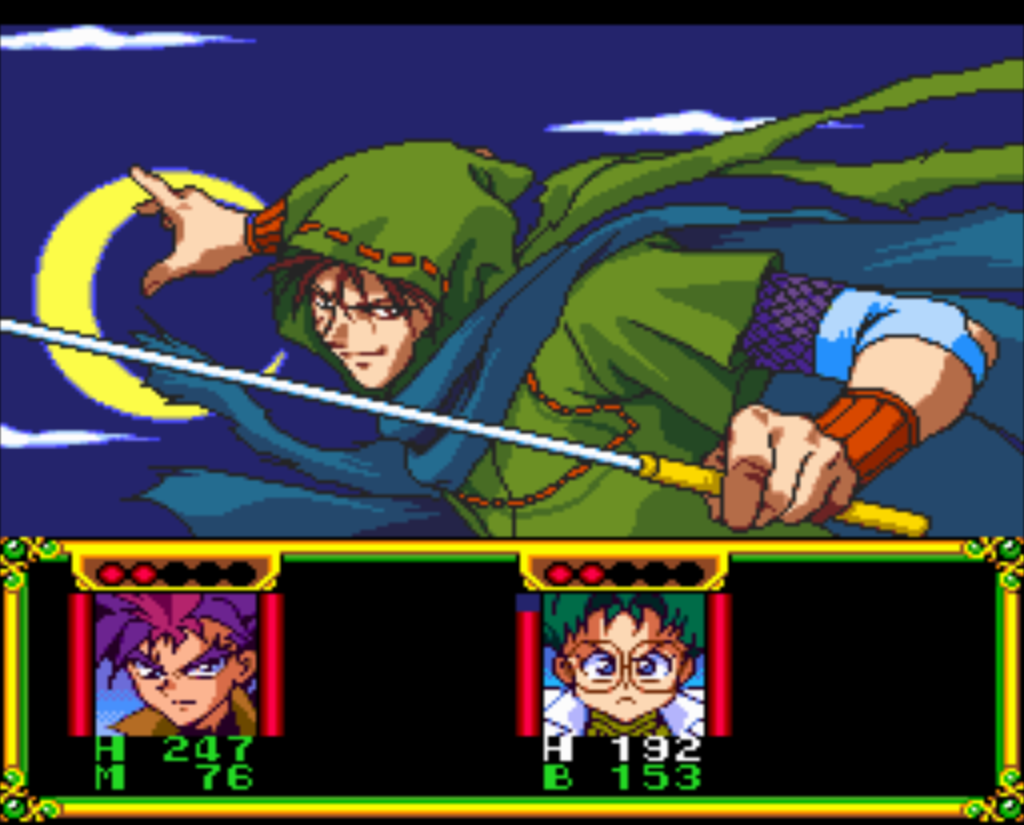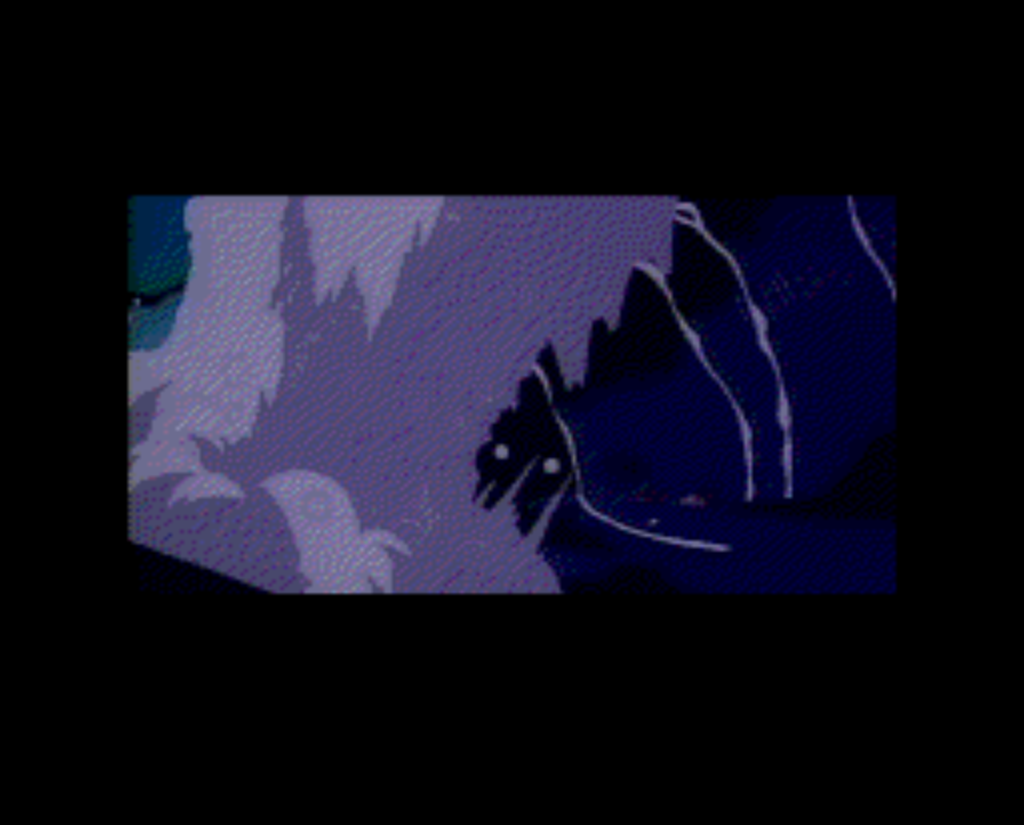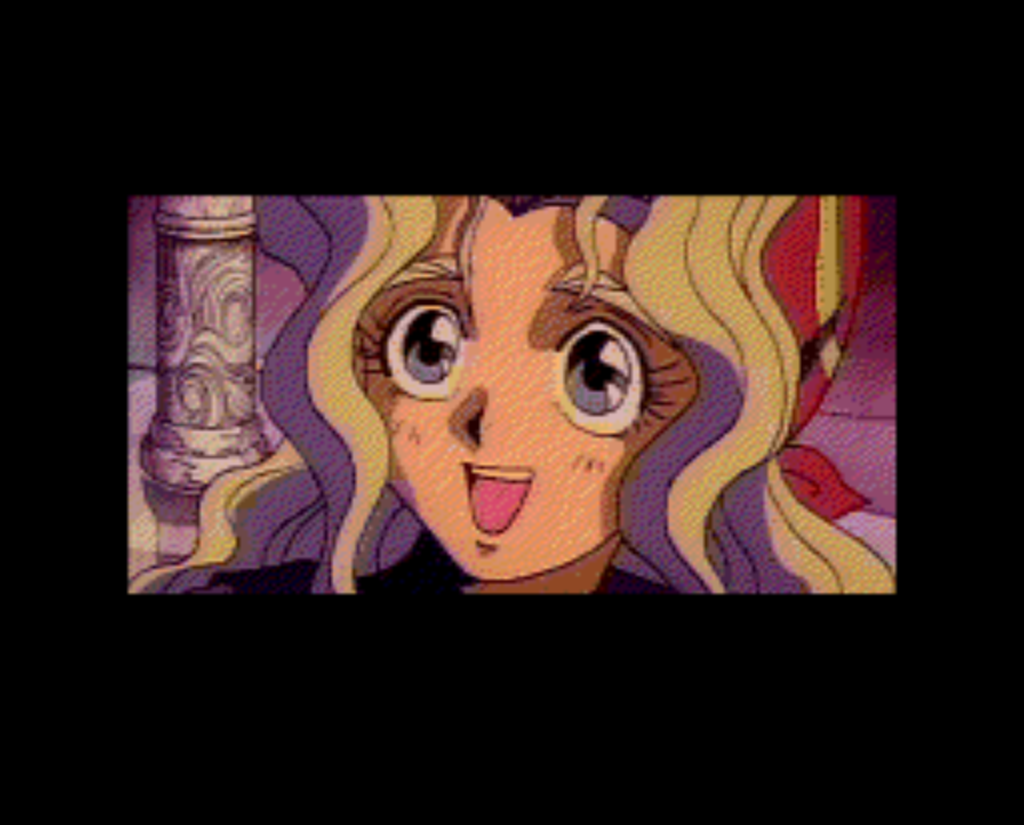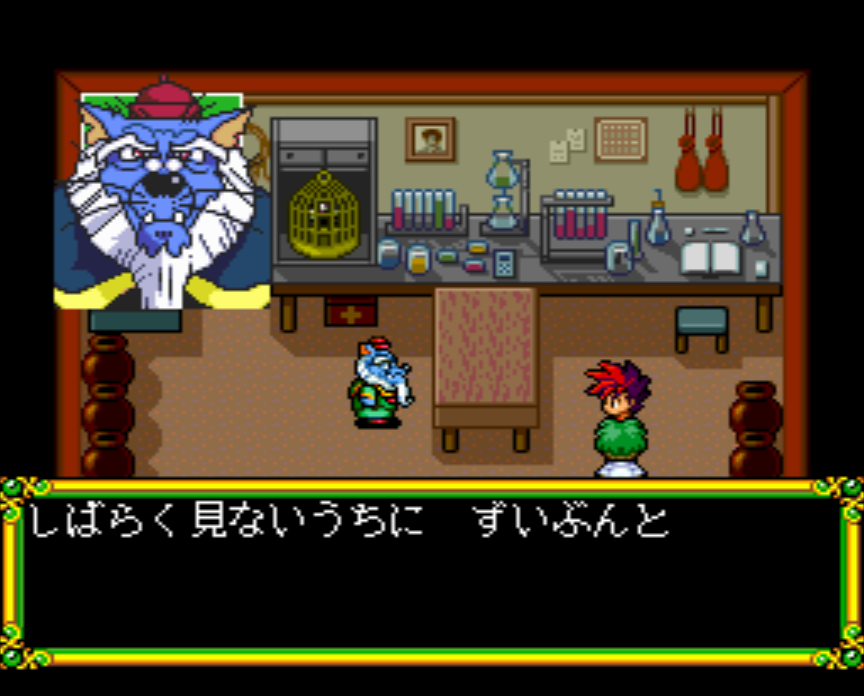Shin Super Robot Taisen (新スーパーロボット大戦), released 12/27/1996, developed by Banpresto
This is another Super Robot Taisen game, and as usual I’m reposting the message board posts I made many years ago when I played the game. For this one I was playing on an actual console and at the time I did not have any equipment to take screenshots, so this was all text. I’ll grab a few pictures off the Internet to show what the game looks like.
I offer my usual caveat that these posts may not be of interest to people who don’t know SRW or have played the game. OK, now on to my 2008 comments:
Banpresto was still feeling for direction, and Shin SRW, the first original game for the Playstation, represents a dead end for the series in a number of ways. Even so, there are some elements of the game that survived into future installments.
The game followed LoE in using full-size sprites instead of SD. The game featured fully voiced combat quotes for all characters (4S had voices only for the heroes). The original characters are not the Masou Kishin, but a new set of heroes and enemies. It seems that this was intended to be the start of a new storyline, but in the end this was the only game, and it was up to Alpha to steal the SRX characters from this game and extend their story.
Series-wise, this is an interesting game in that the only UC Gundam series are CCA and V. This is the first time CCA’s plot is represented in the game, and CCA-era Char makes his first appearance. The Getter Robo team is done using the manga “shin getter robo” character designs; including a version of Benkei made specially for this game by Ishikawa Ken (the original manga artist). It’s not until Crossbone Gundam’s appearance in Alpha 2 that a manga is used as a source material again (aside from small cameo mech design appearances).
For new series, on the real-robot side, Layzner and Gundam W debut, although Gundam W is something of a cameo since the series was still in progress. On the Super Robot side, Voltes V, Gaiking, and Trider G7 make their first appearances — Voltes V shows up somewhat often after this, but Gaiking and especially Trider G7 are rare.
Systemwise, the game follows 4 in most ways. There are still buried treasures, the seishin are still old SNES-style, EN and Limit are capped at 255, etc. The story path is the most linear since 2 — there are two major story branches, and there’s one instance where you can get one of three stages depending on what happens, but other than that, it’s completely linear. There’s a secret stage at the end if you complete both routes on the memory card.
Here we go.
Stage 1 – Mysterious Invaders
The game opens with an impressive FMV of the Balmar ships destroying a colony. After this you get some talk with a shadowed Char and some other people, then Voltes V makes its debut.
THE BATTLE SCENES LOAD SO SLOWLY…WAAA. I’m glad I had some papers to grade while doing this.
Stage 2 – Trider G7 appears!
THE BATTLE S..ok, I won’t mention that every time.
How do I combine Voltes V? Even if I do it in the intermission menu I have to sortie the 5 units separately and I don’t see a combine command anywhere even if I arrange them in a V pattern.
Stage 3 – Photon Power Lab
The first 3 stages are all pretty easy; just fights vs. Voltes enemies (and a few Mazinger), mostly those weak disc things. The game is now freed from the confines of the Divine Crusaders setup, so they can have the super robot enemies acting alone. No Reals yet, but looks like V Gundam appears in the next stage.
Stage 4 – League Militaire
THESE BATTLE SCENES LOAD SO SL…sorry. But they’re even slower than F/FF.
Some real robots finally show up, but they’re in the water. Another fairly simple stage; I doubt you can beat the boss here.
Stage 5 – Ryuusei Date
First appearance of Ryuusei and the R-1. In this storyline, the SRX project is done by Dr. Hamaguchi (of Voltes V). Ryuusei and the R-1 both start out essentially in the same design they’ve had ever since, and Ryuusei’s personality as a mech otaku is already there.
Stage 6 – Point Kasaleria
The attack animations are a little more varied — the game now uses some inset graphics to show weapons, and they use different models of the sprite to suggest movement (i.e. if they are going to fire a gun, the arm actually extends). There’s still no true animation (and won’t be until Alpha).
This is more V Gundam; you finally get the V Gundam itself, although it’s not particularly impressive.
Ryuusei hasn’t joined the team; I wonder if you have to take the Earth Route to get him. I notice that Stage 29 on the space route is an SRX stage so it must come in at some point.
Stage 7 – Chronicle Strikes Back
More V Gundam. The major route choice comes here; the way it’s done is kind of interesting. The League Militaire is under attack, and Voltes V and Mazinger decide to stay to help, while the Daiku Maryuu decides that since it’s in the military, it can’t get involved, and goes back to Japan.
Stage 8 – Vesper and the Aliens
As others have pointed out, it looks like the Balmar group includes all the super robot enemies rather than them acting independently.
Stage 9 – The Warriors’ Shine
I only have 3 units right now (Voltes V, V Gundam, and Mazinger) so the game is a little odd, but the maps go “quickly”. They’re much shorter than the early F missions, although the animations load a lot more slowly.
This is a “protect” mission; I actually got game over once because the little truck only has 800 HP. I finally was able to combine Voltes; maybe you have to wait until some point in the story. It does look like they all have to be together rather than in a V shape.
The next stage has you protecting two 800-HP trucks; I’ve already gotten two game overs on it since one laser blast from the enemy blows up the ship and I still only have Voltes, Mazinger, and V Gundam.
Stage 10 – Heart
Protect two trucks, with the same three units. Kind of an annoying stage since one attack can take the truck out (and of course they don’t dodge or block).
Stage 11 – The Gaddol Team
Yet another stage with protecting the two trucks, with the same three units. At least I finally figured out how to combine Voltes V; I think you may have to get to a certain stage before you can do it.
The story is still basically following V Gundam; the aliens have apparently made some deal with Vespa since the mysterious commander “Gozzo” (who we know from @ and OG of course) told them to stop attacking Vespa.
The next stage is protecting those damn trucks again.
Stage 12 – Vivid! The Shurak Team
Arrrgh, another annoying “protect the trucks” stage. I don’t like these stages because they depend entirely on you positioning your units in exact places to block the enemies (since one hit kills a truck). The entire Shurak team joins in this mission, so now I have more than 3 units. However, I’m not sure 3 units + 8 gun-ez (or whatever the number is) is all that much more interesting. I also don’t like how the Gun-EZs are better than the Victory Gundam.
Stage 13 – Starting a Journey
All you have to do on this stage is move all your guys in the plane. You don’t have to kill (or even engage) a single enemy.
Stage 14 – Voltes Can’t Combine
Another odd stage; just move all the Shurak team near the Voltes parts and the stage ends. Voltes leaves after this.
Stage 15 – Gibraltar Area
Dancougar! Dancougar stays around, right? If so I’m going to start dumping money into it. After this stage, the Gun-EZs get upgrades — they were already better than the V Gundam, now they’re even more better.
Stage 16 – Lienhorse Jr. Takes Off
This stage introduces the Layzner characters. It’s a little hard to tell this early, but it looks like there is no “Grados”, instead the Layzner characters are all just part of the Balmar empire (with Gresco being a top ranking person). Later there may be more info on this, but in general the earlier games blended the series together a lot better than the later ones.
However, it doesn’t look like you actually get any of the Layzner people on your team in the Space route. Guess I’ll have to wait until SRW 64.
The dialogue in this stage is the first appearance of the name “Balmar”. Also, Aya joins. Even though they still have T-Link moves, there’s been no real explanation of this, or the SRX project, or any backstory at all for the SRX characters.
Stage 17 – Mysterious Enemy Warship
First appearance of the Helmoze, and of Gozzo (although there’s no indication which one it is, or even if the idea of the clones had been developed yet — I guess I’ll find out later). You have to be careful since it has a devastating MAP attack, but it moves very slowly and you can easily avoid it. The stage ends when the Lienhorse leaves the map.
Stage 18 – Becoming a Blue Shooting Star
Char and Amuro appear here. Char is the head of “Neo Zeon” but there’s no indication of what the original Zeon was. The instruction manual mentions some colony that declared itself a dukedom, setting the stage for numerous wars, but no names or specifics are mentioned. Zechs is with him as well, but once again, it’s not yet clear what the backstory of the Gundam Wing characters is — Char has saved Zechs from a colony explosion, and from what I saw on the Earth route in MN’s walkthrough, Hero is trying to stop Char.
This is the first stage that has fairly tough enemies. The best thing to do is move everyone to the left to be near the Londo Bell forces when they arrive.
Gyunei gets a pilot cut in for his funnels. I had thought that Compact 2 was the first game with pilot cut-ins, but I was wrong.
Stage 19 – Big Cannon
Now that I have the Ra Kalium I can smoke the enemies with super MAP attacks. Apparently also if you upgrade certain weapons they turn into MAP attacks; Dancougar can get one so I’ll have to remember that when I have a little more money (you have to upgrade it to level 8).
The Gun-EZs are cool because you can use them as suicide grunts; they only cost 300 to repair so there’s really very little harm in losing one (or three).
Stage 20 – Moon Surface Operation
Fight against Ashura. Nothing really special happens here.
Stage 21 – Moon Guardian
All you have to do here is defend the ships until two of them leave the screen; it’s a lot like the truck missions but the ships are a lot easier to protect.
Stage 22 – Confusion of Zanscare
There are only 6 enemies on this stage — there might be reinforcements but I beat all six on the first round so the mission ended. You get Nu Gundam after this stage, and Rai joins. Aya also gets the R3 powered. It looks like Aya plays Beltorchika’s role for pissing off Chein.
Stage 23 – Amuro and Char
Quess shows up here; the events are a really abbreviated version of some CCA stuff. The fight is just against grunts, though.
One thing I forgot to point out is that the SRX team has old-MK syndrome in that all of the SRX team pilots get Time To Come as their music. Strangely, Psychic Energy is in the game but it’s a stage BGM rather than Aya’s theme.
Stage 24 – True Intention
This is another really short stage — it starts out with you vs. Gyunei, Zechs, Quess, and Char. They all run away in a few turns when the reinforcements (3 units) show up. I only defeated Zechs; I think you would need some serious upgrades to Nu Gundam, R-2, and R-3 to defeat them all, although it should be theoretically possible.)
Stage 25 – Battleship Motrad
This is another short stage; all the enemies leave and get replaced by a very small number of reinforcements. I killed them all in 1 turn, or maybe more would have showed up?
Stage 26 – A New Power
There are a lot of enemies with a lot of reinforcements; I found out that the battle ends after 12 turns or so no matter what so I didn’t have to kill as many enemies as I did.
Ryuusei and Shin Getter joins after this stage. Shin Getter uses the Shin Getter manga designs for the Getter team, which is always interesting to see.
Stage 27 – Mystery of Side 5
This is an easy stage because you can sit on Angel Halo (+30% DF/evade and healing) and just let the enemies come to you.
However, this stage has some of the most ridiculous mechs in Gundam history — when I was watching V Gundam I couldn’t stop laughing at the silly tire mechs (the Einerad), and the Dodgore is pretty silly too.
Stage 28 – Space Grave
Heero appears as a guest here (you can control him). You have to shoot down Zechs with him to get him later. The Wing Gundam kind of sucks, though — the Buster Rifle only has 2 uses, and every other attack is range-1.
Stage 29 – Decoy Operation
I can see this stage being hard if Amuro doesn’t have double move. The stage ends when one person from the main group (who you can’t control) reaches the base. Reinforcements pop up right next to them. They exhibit the usual NPC behavior of only counterattacking with their strongest weapon no matter what the circumstance. But with double-move Amuro this is pretty easy.
Stage 30 – The SRX is Operational!
This is SRX’s first appearance; there’s no real explanation for it except “Hey, guess what! We can combine!” There seems to be (as of yet, at least) no deeper explanation behind the SRX like there was in the Alpha timeline. Unfortunately you can only use it for three turns before it has to separate.
I really, really hate these indoor maps of the early games, where you have to travel through passageways encountering reinforcements along the way. They always take 25+ turns to complete and are very tedious. (More recent games have had “indoor” maps but they are not as annoying.)
Stage 31 – Angel Halo
This is a massive fight with most of the Victory Gundam enemies and a lot of reinforcements. I’m afraid these final stages are going to get more and more tedious as the game throws larger and larger groups of enemies at me. Unfortunately the next mission is another indoor mission.
Stage 32 – Angels Rising to Heaven
This is an annoying stage, although I guess I at least give them some credit for trying something new. You have to move 4 Shurak team members to the right places to set the bombs. Luckily they don’t screw you over with reinforcements, and there are energy tanks to recover you. Zechs appears and you can kill him with Heero to get Heero on your team in two stages.
I had a hard time figuring out what to do once the enemies were dead. The walkthroughs I could find weren’t very clear on this point — you have to have a specific set of 4 Shurak team members (the ones that autodeploy) and they have to be at specific spots. When you get one into the right spot she will say a line and then be unable to move; that’s how you know it’s right.
Char shows up here, finally, but the Sazabi is fairly easy to take down with Shin Shine Spark or the like.
Stage 33 – The Sound of Bells Resounding in the Battlefield
This is supposed to be the climactic Victory Gundam battle with all the V enemies coming out and beating you up. In fact, if you beat the mission by the third player phase, most of the enemies in the stage will never appear (this is still the old SRW style where the mission ends when all enemies are dead even if some reinforcements have not appeared). This messes up the story, though, because Katejina is apparently supposed to die in this stage but she never appears.
MN’s descriptions of these last few stages have some hilarious lines; he must have been getting annoyed with the game: [2002 Kurisu: Michael Neidengard, who did a bunch of walkthroughs and story summaries for SRW games.]
This is odd because Fala can be wiped out like a crack-smoking bitch writing
on the whiteboard in a single hit. Call it poor game design. Anyways.
As your dudes point out, Usso has Shakti to keep him warm at
night, so no need to worry about psycho hosebeasts from years past.
Stage 34 – Char’s Counterattack
This is kind of a tough stage, but only slightly so. You just have to make sure you’ve got the firepower to deal with a whole bunch of double-move enemies right at the beginning and you’re fine. Char himself is a weakling.
Despite this stage being called “Char’s Counterattack” it has nothing to do with CCA; it’s just a fight against Char and his goons. In general Char doesn’t seem to really have the personality or motivation he does in the shows; he just sort of sits around and mopes and gets mad at Amuro.
Somehow I didn’t get Wing Gundam; I must have done something wrong. Wing Gundam sucks, though, so that’s OK.
More MN:
And all of this taking me 1.5 turns – so much for the legendar(il)y
#sexually_impotent Red Comet and his assorted analwives.
Stage 35 – Deciding Battle! Helmoze
This is the final battle. Gottso appears in the Zfield (or Zphroude or however it’s spelled). You have to hurt it a little, then Gresco comes out in a ship, then beat him, then Gottso reappears and you have to take him down. I ignored most of the enemies and just used Shin Getter + resupply seishin, plus some sacrifice guys, to win the game. The Helmoze is not actually a unit; if you move your guys in the wrong place the MAP weapon instantly fires and you die automatically.
The ending scene is pretty short, Char apparently goes with the Balmar and warns that they’ll send more forces eventually.
So that’s the end of Shin. It’s a bad game; I don’t recommend playing it at all. It is sort of interesting to see the first appearance of Balmar and SRX, but they’re pretty thin. Balmar is just a generic invading enemy force; there’s no hint of any particular affinity with Earth or with the SRX project or anything like that. SRX likewise has no deeper significance other than yet another super robot. There’s really very little good I can say about this entry.
If you could skip battle scenes I might actually put it in the left group of “acceptable” SRWs but instead I will put it at the head of the “unacceptable” group. Judging from what I’ve played and read about the rest of the games, I don’t think any other entries in the series will go in the unacceptable group. [2022 Kurisu: Compact 1 did go in the unacceptable group.]
